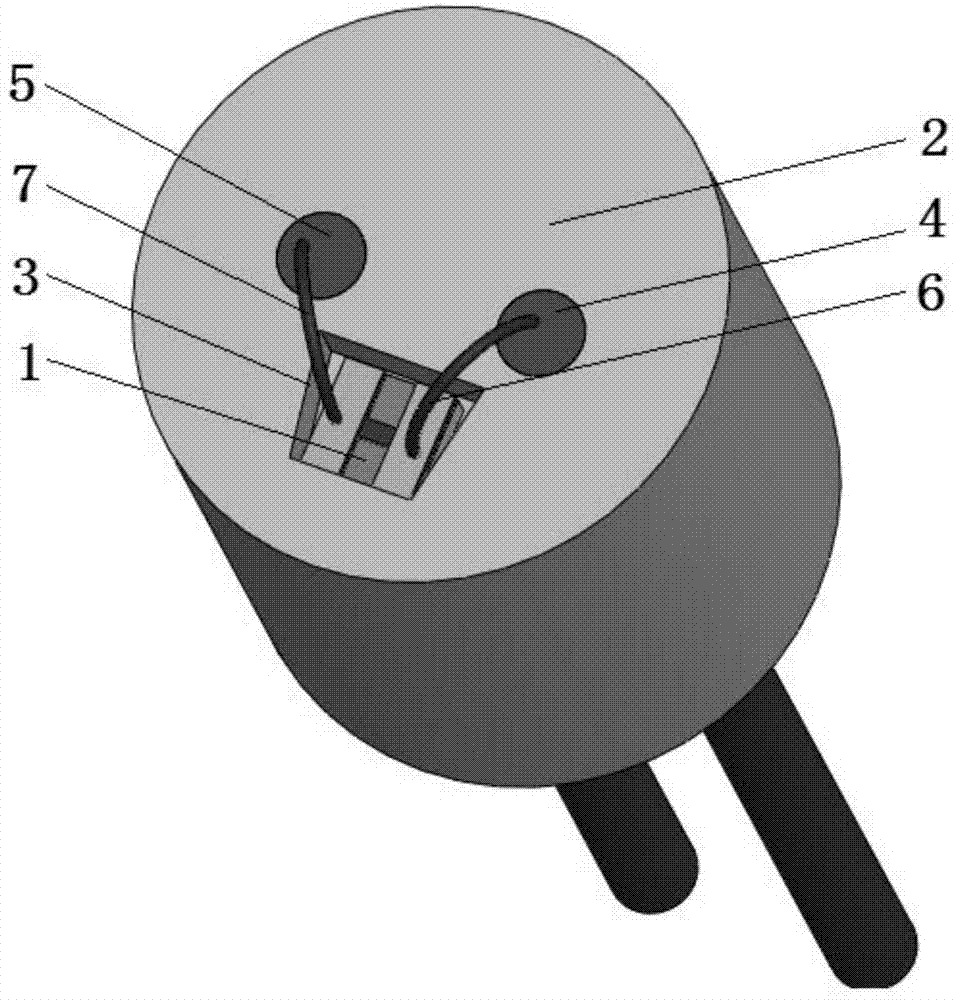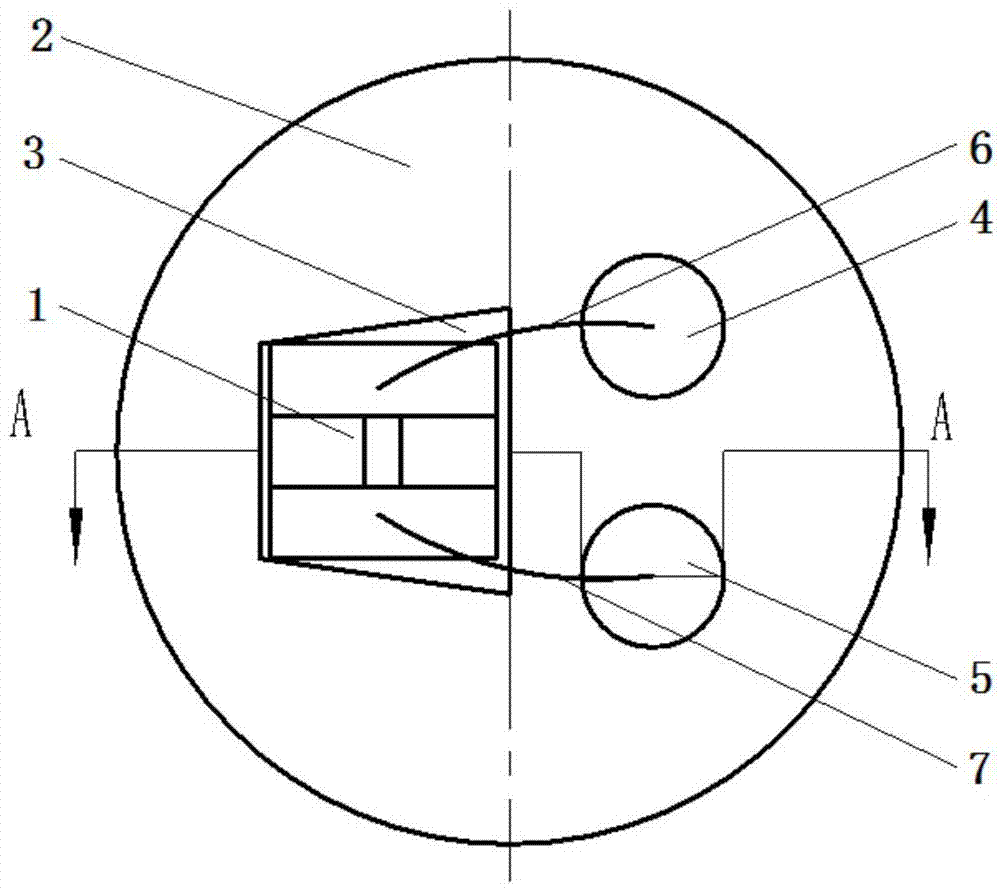A Microdetonator with Low Firing Voltage and High Power Output
A low ignition and voltage technology, applied in weapon accessories, fuzes, offensive equipment, etc., can solve the problems of electric detonator safety current reduction, high output power, and good electromagnetic safety, and achieve the effect of improving comprehensive performance
- Summary
- Abstract
- Description
- Claims
- Application Information
AI Technical Summary
Problems solved by technology
Method used
Image
Examples
Embodiment Construction
[0021] combine Figure 1-3 The low ignition voltage semiconductor bridge miniature ignition assembly includes three parts: semiconductor bridge transducer chip (1), asymmetric miniature ceramic electrode plug (2) and electrothermal sensitive ignition powder (9). Fix the rectangular semiconductor bridge transducer chip (1) in the trapezoidal groove (3) of the asymmetrical ceramic electrode plug (2) with an adhesive (8), adopt ultrasonic welding, and use bonding wires (6, 7) Connect the two metal pads on the semiconductor bridge transducer chip (1) to the two-leg electrodes (4, 5) of the ceramic electrode plug (2) respectively, so that the two leg electrodes of the electrode plug ( 4, 5) and the two metal pads of the semiconductor bridge transducer element to form a circuit path, and the semiconductor bridge transducer element is filled with electrothermal sensitive pyrotechnic powder (9) refine the neutral trinitroresorcinol lead to form an ignition component .
[0022] Fig...
PUM
 Login to View More
Login to View More Abstract
Description
Claims
Application Information
 Login to View More
Login to View More - R&D
- Intellectual Property
- Life Sciences
- Materials
- Tech Scout
- Unparalleled Data Quality
- Higher Quality Content
- 60% Fewer Hallucinations
Browse by: Latest US Patents, China's latest patents, Technical Efficacy Thesaurus, Application Domain, Technology Topic, Popular Technical Reports.
© 2025 PatSnap. All rights reserved.Legal|Privacy policy|Modern Slavery Act Transparency Statement|Sitemap|About US| Contact US: help@patsnap.com



